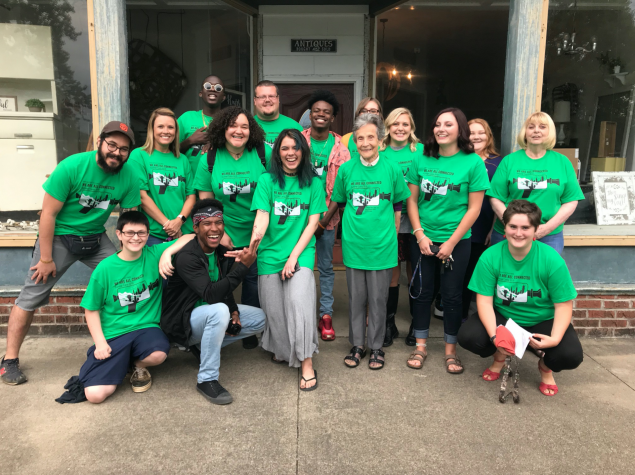Link to JSE April 2020 Ecomedia Literacy Issue Table of Contents [2]
Article PDF
Abstract: In the summer of 2019, the We are All Connected urban-rural youth media program launched Something in Our Water, an eco-media documentary project that investigates the shared problem of water sustainability, public health, and climate change in their communities. This article discusses the transformative experience that the youth from New York City and the Clearfork Valley in the East Tennessee Appalachian mountains had as they learned about the history of multinational coal mine companies’ economic and environmental exploitation of the community, and the fierce and unequal power relations that continue to challenge environmental advocates today. With a focus on the perspectives of one of the Tennessee youth producers, the article reflects on the impact intergenerational learning and multicultural collaboration can have in nurturing future youth and community eco-media activists in Appalachia in the face of deeply rooted local and structural constraints. Through the process of documenting struggles in urban and rural communities, the youth team developed a deeper understanding of how the environmental justice movement cuts across differences to show how everyone is connected and can be empowered to take action.
Keywords: Environmental education, Youth media, Critical media literacy, Civic participation, Experiential learning, Youth participatory action research
“Something’s in the water, slowly killing all we hold dear.
Industry is booming, but seeds can grow in puddles.”
-WAC Youth Producer from NYC, Iliana Lugo
Introduction
In the summer of 2019, youth from New York City made an annual twelve-hour road trip to live and work with Eastern Tennessee partners of the Clearfork Valley to make a documentary film on a social issue they are all facing. Participating in the Educational Video Center [3]’s (EVC), We Are All Connected [4] (WAC) program, the urban and rural teens came together and produced a documentary, Something in Our Water [5], about how extractive industries and climate change affect water quality for low income and marginalized communities in both locations.
Educational Video Center’s Appalachian partnership dates back to the mid 1980’s when EVC first held urban-rural youth video summer camps in Eastern Tennessee. In 2017, EVC revived the urban–rural summer camps with an original co-founding partner from the 1980’s, Marie Cirillo, who is a community developer and activist and her sister organization, The Parent Resource Center. Through the WAC program, New York and Tennessee students have chosen to turn their cameras on systemic issues personally relevant to them, including broadband access, the opioid epidemic, foster care, and most recently water quality.
In focusing on water sustainability, the youth made clear parallels between the issues urban and rural communities confront while developing a deeper understanding of how the environmental justice movement can cut across differences to show that everyone is connected. Bridging the transformative nature of field-based and media-based learning for the participating students, this article highlights the transformation process of their sense of identity as becoming community researchers who can make an impact in the face of local historical power dynamics.
The youth interviewed Appalachian community environmental specialists and learned how surface mining and logging pollute waterways and watersheds with toxic heavy metals including arsenic, cobalt, copper, cadmium, lead, aluminum, and zinc. The youth shared stories of tap water in their homes and schools frequently being blue, copper-colored, or milky white. Mountaintop removal, clear cutting, and climate change have resulted in massive flooding in the region which has also impacted the water supply that the youth and their families rely on. Flooding and mudslides actually delayed the NYC youth producers from arriving into the Clearfork Valley to work with their Appalachian counterparts for the summer camp.
click here to open vimeo video [6]
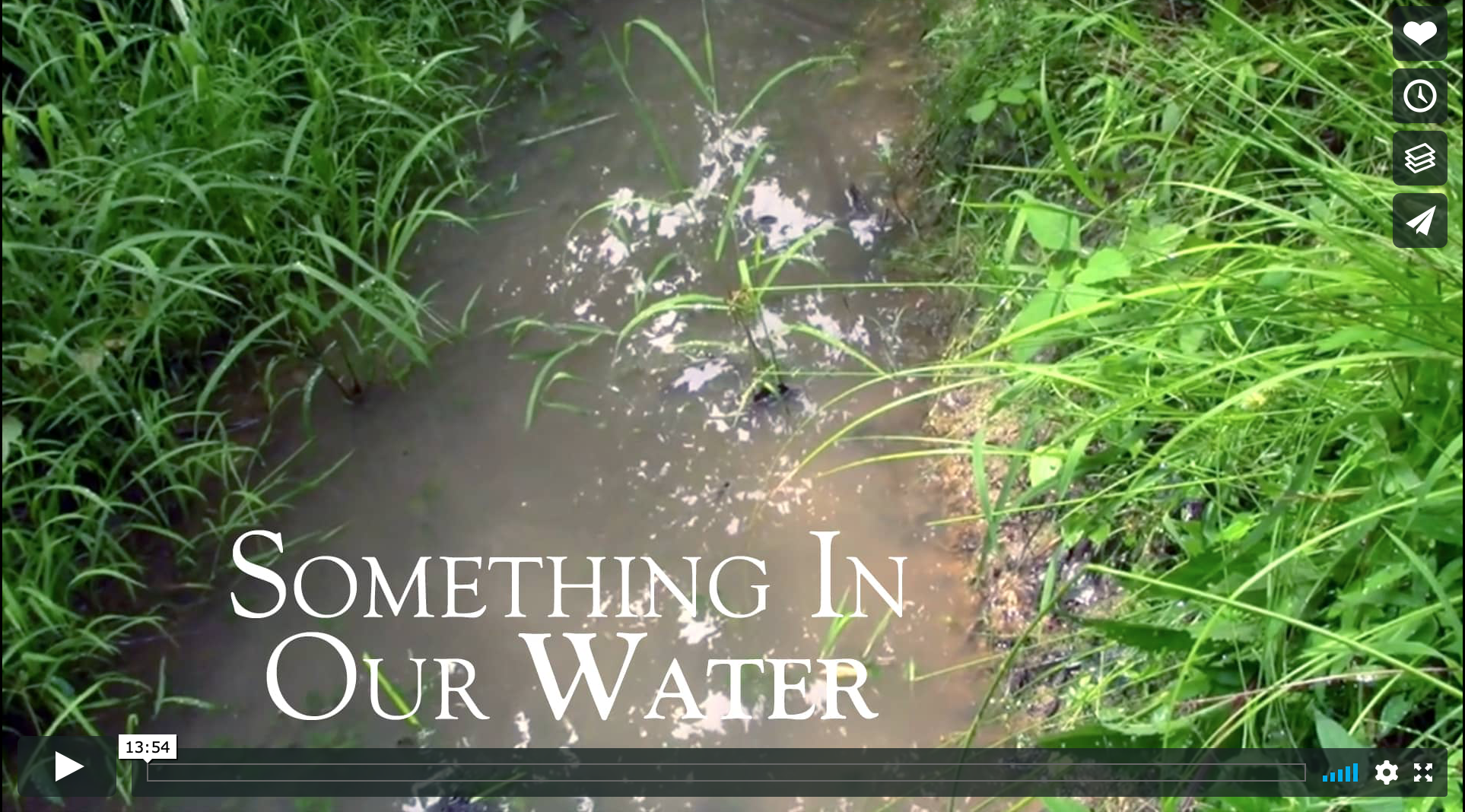 [6]
[6]
The Coal Fields of Appalachia
In their research during the summer camp, the young filmmakers found that something was indeed in the water in the community they explored along the Eastern Tennessee/Kentucky border. However, they also discovered there was something else in the power dynamics of the community that was constricting the ability of the group to explore water quality as an environmental justice topic in an unbiased, open, and unfettered way. Working on a locally controversial subject revealed the unique place-based challenges of working in the intersection of media and environmental education in the Coal Fields of Appalachia. What were the unique social, environmental, and economic qualities impacting the work of WAC in this special place?
Every year during the summer camp, the entire group is always inspired and awed by the beauty of the mountains and resilience of its people. Central Appalachia is a region of diverse landforms, climates, soils, and has millions of years of geologic stability. These mountains have some of the most diverse ecosystems of plants and animals found in the world’s temperate deciduous forests. Yet at least 83% of the habitat in this ecoregion has been disturbed, with mining and logging being the major threats (World Wildlife Fund). The extraction industry continues to boom with Australian and Chinese companies owning the largest percentage of land locally.
The WAC summer camps take place in a subregion of Tennessee known as the “coal Appalachia” of the northern Clearfork Valley (Banker, 2011). The socio-political history of the area was explored in a landmark study on power analysis by John Gaventa (1982) entitled, Power and Powerlessness: Quiescence and Rebellion in an Appalachian Valley. This region is noted for its stark contrast between massive mineral wealth and the pervasive human poverty characterized by high unemployment, poor health, and ecological ruin. The area has been dominated for centuries by large absentee landowners who focus on resource extraction. This has created an unusual power dynamic affecting the cultural climate which provides both challenges and opportunities for learning.
One of the first challenges encountered was an underlying unease about discussing water quality. People were afraid to speak out about the environment or to get involved in doing environmental work. For example, two mothers of Tennessee WAC students as well as the local WAC leaders voiced their concerns that a film about local water quality could mean long-term repercussions for the local WAC students and their families. Three governmental agencies declined to be interviewed. There was a fear that the film project might be used to denounce the dominant mineral extraction industries active in the area. One of the authors of this paper, Derek Douglas, WAC Tennessee team leader, former watershed coordinator and environmental educator/activist, explained that involving the community in water quality monitoring has been a real challenge. Participating in local water quality monitoring is seen as being antagonistic to the mining and logging industries. Locals who have participated in environmental work have often been threatened, intimidated, and isolated by community members who are aligned with the global energy companies present in the region.
Having worked closely with John Gaventa and the power analysis project, which identified five levels of power that prevent people from organizing, Douglas points out that the effect of absentee land ownership by large multinational corporations maintaining control of the community over many years creates an atmosphere of apathy. In a follow up conversation on the historical context of the community with local WAC student, James Hatfield, Douglas explains:
One of the levels of power was tied to the economy. People bought at the company stores. They didn’t get paid in cash, but rather coal mining money, called script. If they did anything wrong, it would be deducted from their account…You had religion. In the churches, the preacher was the one chosen by the coal companies. So what they preached was what the coal company wanted them to preach. Another way that the coal companies maintained control was by prohibiting maintaining a garden at your company house because it was not your land. It belonged to the coal company. The garden competed with the company store who sold goods at the price that they wanted to. These power dynamics prevent people like me, you and others from being who we should be and asking the questions that we should ask. (Interview, October 24, 2019)
Yet certainly an important benefit to working in the coal fields of Appalachia is the opportunity to do hands-on water quality testing with local community members who are asking important questions. Long term activists have been working for years overcoming barriers by courageously challenging and resisting the status quo. Organizations including the first Community Land Trust in Appalachia, Community Institute, and Citizen Science Project provide a foundation to empower stakeholders to restore the civic and environmental capacity of the community. The Clear Fork Valley itself provides intrinsic educational assets with its cultural attributes of resilience, vast outdoor classroom, and watershed resources, both damaged and pristine. This summer activists and students brought their individual and collective strengths together for a week of environmental and media education in a truly spectacular place. This backdrop for the summer camp provided unique challenges and opportunities for learning. The Clear Fork of the Cumberland Watershed that winds its way through disparate, unincorporated communities that were once connected as mining camps once again become connected as a place where rural and urban young people unite in embracing environmental justice in a context of eco-media education.
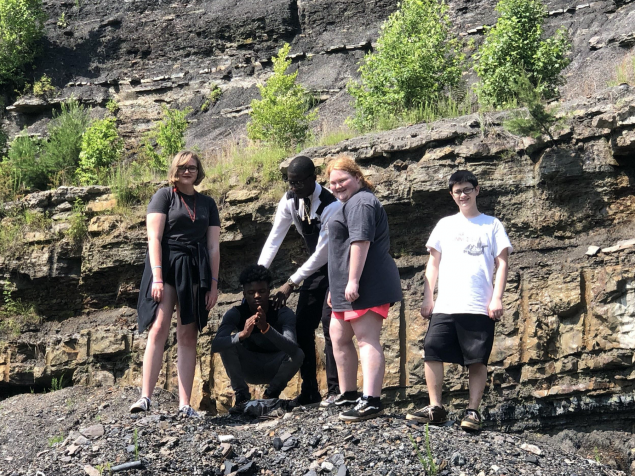 [7]
[7]Figure 1: WAC Youth Producers on top of a slate dump at an abandoned coal mine in the Tennessee Clear Fork Valley. Left to right: Megan York, Mikenlove Pierre, Mediba Diarra, Jodie Lowe and James Hatfield
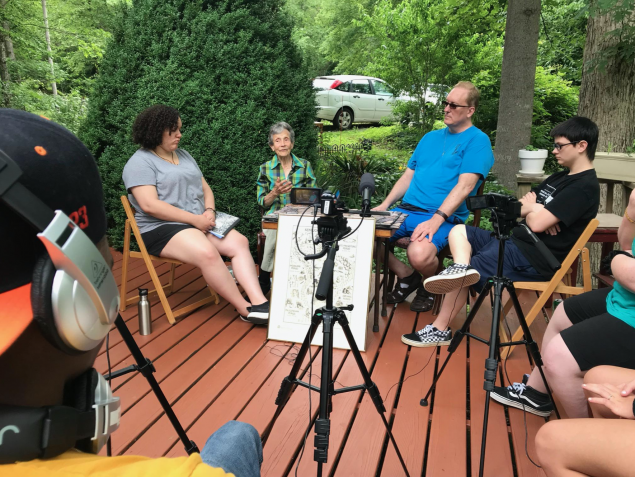 [8]
[8]Figure 2: WAC Youth Producers interviewing local activists at the Woodland Community Land Trust. Left to right: Iliana Lugo, Marie Cirillo, Derek Douglas and James Hatfield
Eco-Media in Central Appalachia
The field-based learning of water quality monitoring and videography skills combined with the social interaction and reflection provide the opportunity for a truly transformative educational experience. After learning so much about coal mining in conversation or through text, students were amazed to be holding an actual piece of coal in their hand at an abandoned surface mine. After visiting the mine and climbing up large slate dumps, they were shocked to see streams of bright orange water impacted by Acid Mine Drainage (AMD). WAC Youth Producer, Iliana from New York City wrote a poem for the film proclaiming that “Seeds can grow in puddles” and we saw a tremendous transformation take place in Tennessee WAC Youth Producer, James Hatfield.
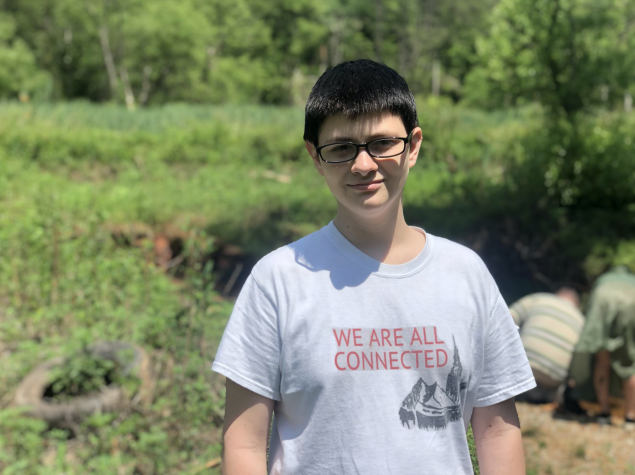 [9]
[9]Figure 3: “I wasn’t raised with money or technology so I spent my whole time outdoors,
and I spent all day with the animals I love. That’s how I developed my
knowledge and love for nature…And now I’m finding out that what
I love is dying because of carelessness and mining.
And I just lose my mind over that.”
-WAC Youth Producer from TN, James Hatfield
James Hatfield is one of the original We are All Connected participants since its revival in 2017. Each year, James has grown as a leader, media maker, and young activist. As someone who struggled with fitting in and learning in school, James reflects on his experience as a youth producer with WAC:
I think these projects are important not just because they teach us what we know and what we didn’t know, but we can teach others who didn’t know or care. When I first started working with the program, you could see how careless I was. I was very rude. I would flip people off in every photo and I think I’ve really come around. I’m not as careless as I used to be. I started paying attention and then I just got completely fascinated with the program. And I really started getting excited about it because I knew we were making an impact. We started doing good things.
This past year, James’ innate passion for environmental justice issues was further kindled when the group decided to focus on water contamination. Talking about hopes and expectations for the project at the beginning of camp, James stated, “I want to make an impact.” A few months after camp, James recalled:
Back then, I was completely unaware of the problem. Which got me thinking, what other things are there that we see every day in our everyday lives that we just kind of look over and what can we do about that?… I think everybody needs to know what they’re drinking. Everybody has the right to know that.
We are All Connected has provided an outlet for James to express himself and learn by making media that sheds light on systemic issues that affect him and his community. “Now that we all know, we’ve got to tell other people. And we got to find a way to do that …that’s the whole point of the video,” James concluded.
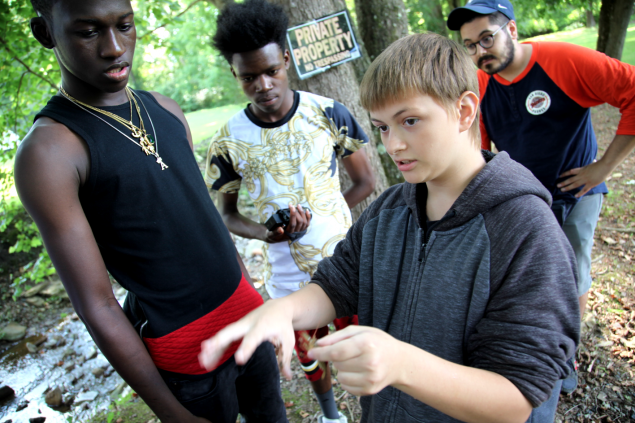 [10]
[10]Figure 4: James explains to the New York WAC Youth Producers the wildlife near his local streams.
Conclusion
Grounded in EVC’s participatory action research approach where community issues are best addressed by the members of those communities, Something in Our Water was a community based collaborative process (Goodman, 2018) (see Steve Goodman’s accompanying article about Teaching for Environmental Justice at Educational Video Center). Students from both New York City and Tennessee connected with the Clearfork Valley’s long history of using media as a tool for community engagement and environmental activism in speaking truth to local power dynamics.
We Are All Connected continues to strengthen the eco-media foundation that the 2019 youth group has trailblazed for their successors; building a critical chain of intergenerational community knowledge and co-creating work that reflects urban-rural connections to environmental justice and injustices of our time. “I think that the WAC program is unique in that traditional education really steers clear of a lot of controversial issues,” adds Douglas, WAC team leader.
Since the summer camp, James has expressed interest in learning more about water contamination and receiving training to become a certified community water quality monitor. Douglas is beginning to mentor James and guide him through the training process. James is a recent high school graduate exploring career options at this time. He has not forgotten about next year’s WAC summer camp where he plans to return in a leadership capacity and help shape the future of the program. This coming summer, James will teach new incoming students what he has been learning from Douglas and other educators as WAC continues onward.
“We are trying to further people’s knowledge of what’s going on in our community and other people’s communities. No matter which way you look at it, all water is connected in some way or form. It’s just one giant chain and that’s how people should be,” James said excitedly.
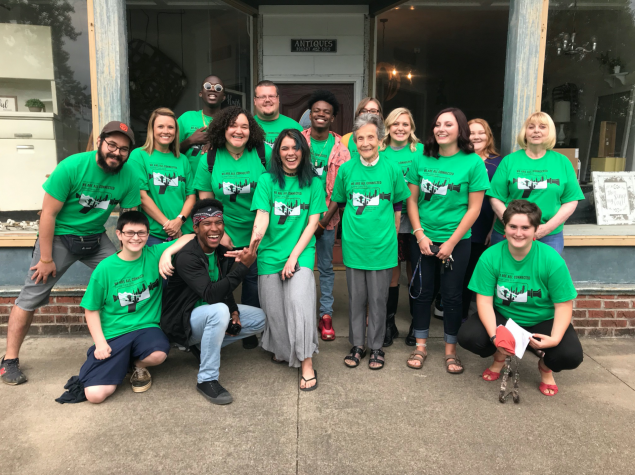 [11]
[11]Figure 5: The We Are All Connected crew after screening their film in downtown Jellico, TN. Left to right back row: Emmanuel Garcia, Dawn Ivey, Mediba Diarra, Iliana Lugo, DJ Coker, Mikenlove Pierre Megan York, Zoe Paul, Jodi Lowe, June Pyle; Front row: James Hatfield, Kendri Feliz, Yhenni Rodriguez, Marie Cirillo, Mckenzie Warren, Morgan Pennington
References
Banker, M. T. (2011). Appalachians All: East Tennesseans and the Elusive History of an American Region. University of Tennessee Press.
Educational Video Center: http://evc.org/ [12]
Gaventa, J. (1982). Power and Powerlessness: Quiescence and Rebellion in an Appalachian Valley. Champaign: University of Illinois Press.
Goodman, S. (2018). It’s Not About Grit: Trauma, Inequity, and the Power of Transformative Teaching. Columbia University: Teachers College Press.
Something in Our Water Film: https://vimeo.com/345962549 [5]
We are All Connected Website: https://weareallconnected3.wixsite.com/somethinginourwater [4]
World Wildlife Fund: https://www.worldwildlife.org/ecoregions/na0403 [13]
